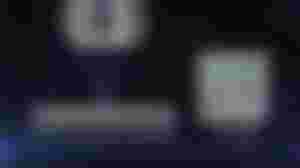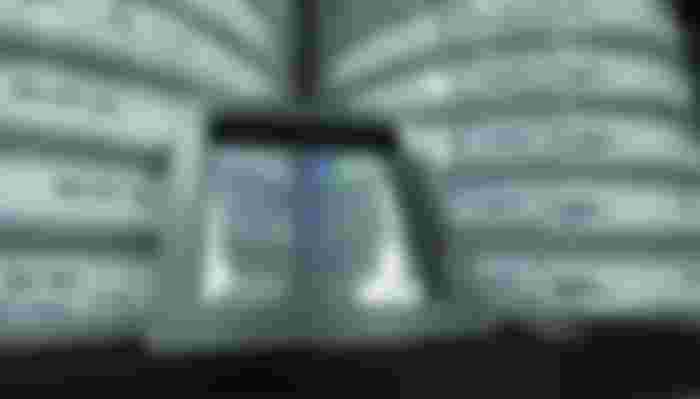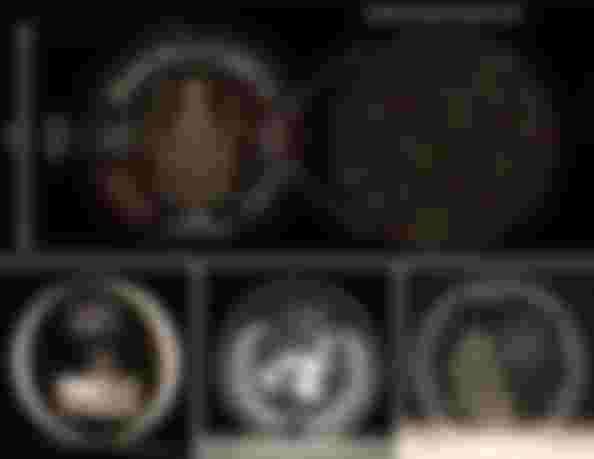


Topic:
- Information storage technology
- Problems with current data storage technology
- The advantage of storing information in glass
- Microsoft Project Silica
- Hitachi Fused Silica Recording Technology
- Messages sent to the next generation for millions of years
In primitive times people carved stones and wrote their stories, thousands of years later we have recovered them and found out our history. The invention of the first paper, the invention of the printing press were all new milestones in data storage. A closer look reveals that since ancient times, what people have always wanted to do is preserve information, pass on their information to the next generation. Whether it is the Bible of Christ or the hieroglyphics written in the pyramids of ancient Egypt, we have got that history, we know it only to preserve information, somehow man has written the story of his civilization-culture. In today's age of computers, mobiles and books, letters, notebooks, pictures - the most important thing in all cases is the stored information. This information can be any document, book, literature, any contract, any recording or thousands of our memories in the form of pictures-videos. Of course, we never want to lose this information, we don't want to waste it. I want more of these to live for hundreds of years.


According to one estimate, the current storage capacity of the cloud on the Internet is 2000 exabytes (2 billion terabytes). It sounds like a huge storage. But in reality the picture is different. If you think only about YouTube, you can see that about 500 hours of content is uploaded on YouTube every minute. In the way of development of technology now day by day everything is becoming cloud based. Not only personal files, but also various security files, medical records, criminal records, public data, etc., are now addressed in the cloud. And so the demand for devices containing long-term data worldwide is increasing day by day. Because if no new storage technology is used, the idea is that one day all the space on the Internet will be gone, even if it is a hundred years later. At the same time, no current digital solution is suitable for archiving data, they will also need new technology in the future. It is estimated that by 2025, the amount of data stored in various cloud storage will exceed 100 jetabytes (1 jetabyte = 100 million terabytes). The big tech giants have no worries about storage devices to secure such a huge amount of data securely and permanently. Many companies are researching new storage solutions. Glass can be such a solution.



What's the matter?
The jeans are seemingly simple. Save data by engraving with a laser inside a glass blade. You must have seen different patterns (Taj Mahal, Eiffel Tower, etc.) carved inside glass cubes in different gift shops, something like that in thick spots. But only so much of the part is simple, the rest of the whole technology is complex enough and surprising. In 2013, a team of researchers at the University of Southampton invented a glass disk in which stored data could be read in 5D. Conventional Storage Medium stores and processes data in 3D. The data stored in the glass can be written and read not only on these 3 axes of X, Y, Z but also based on the information about how the light inside the glass is bent in which direction. To put it simply, a laser wound is created on a normal disk, the disc reader counts the wound areas as 1 and the non-wound areas as 0, which is a binary calculation. Glass discs are also wound with high-powered lasers, called nanogretting. The difference here is that these engravings can be made in multiple layers inside a glass disc. At the same time, the new technology laser can read not only where the wound is or is not, but also how deep the wound is, which direction to turn, how big or small, etc. Looking at each disk again from a different angle gives a different pattern. The current technology has the ability to read the information that is reflected and reflected in different ways for the size, shape, direction, depth, etc. of these wounds from different directions. In terms of capacity, this 1 glass disc is 3000 times more than the normal CD disc available in the market. 1 Blu-ray Disc has a capacity of 128 GB, 1 Silicon Storage Disc has a capacity of 360 TB! Researchers at the University of Southampton have already been able to write information on the entire Bible, Newton's Optic, the United Nations Human Rights Policy, and more. They estimate that the lifespan of these disks will be about 13.6 billion years, which is almost equal to the age of our universe!

Hitachi's fused silica recording technology
There is no doubt that the storage solutions of the present era are capable of providing extraordinary speed, power and other benefits. But none of this lasts long. Long-term intact medium with high holding capacity now needs time. Hitachi has been researching the technology of storing information inside glass since 2006. Hitachi tests have shown that the information stored in the glass in their technology is not lost even if heated to 1000 degrees Celsius for 2 hours. From this test, it can be deduced that the information preserved in this glass plate can remain intact for up to 300 million years. But even if we are able to store data for millions of years, and our future generations cannot recover this information, this technology will fail completely. So Hitachi's goal is to read this glass data with simple and straightforward tools. Femtosecond pulse laser is used to write data. The details of this laser engraving are stated in the next section. This breakthrough technology was developed in collaboration with Kyoto University in Japan. Wounds are created in the glass with the Femto laser, which acts as a 2D code. To make this technology more efficient in real life, Hitachi continues to try to engrave this laser on multiple layers of thick glass. So far, Hitachi has been able to write data in 100 layers inside a single glass pane. Their recording density is more than the current capacity of a Blu-ray Disc. This almost immortal storage solution quickly caught everyone's attention and many more companies started working with similar technologies. In 2014, the payload of the Shin-N-2 satellite, Hitachi, launched into space with this fused silica glass blade. This plaque carves our message of good wishes for generations to come. That message will continue to float in our space year after year. The Hitachi plaque is also housed in the British Museum's "History of the World in 100 Things" exhibition.

Microsoft Project Silica
The solution that Microsoft is working on to store data in glass is called Project Silica. All research on this project is underway at the Microsoft Research Lab in Cambridge.
Project Silica is a technology for storing information in glass. In this technology, data is written inside a quartz glass sheet by engraving with a femtosecond pulse laser (1 femtosecond = 1 part of 1 trillion of 1 second, 100 femtosecond pulse is used to write data). The laser focuses inside the glass sheet, creating a permanent voxel in the glass where the laser focuses, or simply scratched. This process is called nanoagrating, and in this nanoagrating, one pulse of 1 nanometer size is formed in each pulse. In computer parlance, voxel refers to a single data point or sample in a coherent grid of a three-dimensional reference model, in which one or more data can be stored. Inside the glass, each voxel has a specific direction and a certain depth, both of which can be controlled by laser. As a result, different voxels may have different depths and faces. Based on this direction and depth, each voxel can store multiple ‘bits’, meaning that a voxel is capable of holding multiple data. Inside the glass, these voxels are arranged in numerous layers in columns and rows, all of which give it a three-dimensional shape. As a result, a lot of data can be written in a small space. Because the whole system is three-dimensional, it is only possible to create multidimensional data storage devices by controlling the position, direction, and depth on the X, Y, and Z axes of the voxel. Once the data is written on a sheet it is permanently stored there and later the data can be read only by writing from the sheet, there is no scope for any modification. It is possible to write and read data in glass with different technologies. Just as it is possible to read data from a sheet with a computer-controlled microscope, it is a laser reading device similar to the Femtosecond Pulse Laser that is used to recover data from glass. The position of the required information is quickly identified by laser by positioning on the X, Y, Z axes. The reading head (reading laser pointer) then focuses on the layer containing the information, recording the polarization (direction) and depth of the voxels in that layer. In this way the saved data can be recovered by scanning the subsequent layers of the reading head and finally processing all the images together.
Advantages of glass storage or project silica
The biggest advantage of Project Silica is the lifespan of the data stored in it. Quartz glass sheets are extremely strong and once data is written into the glass that data-rich glass can remain intact for hundreds of years. All of the other magnetic storage decreases in efficiency over time, saving stored data. But there is no risk of this corrosion in the glass. Rather, it is said that the lifetime of the data stored glass is virtually limitless, even if the glass is broken, it is possible to recover complete data from it. The only way to destroy stored data is to melt or break the glass. Since all the data is written inside the glass, the inside information will be protected even if there is any scratch on the outer surface. This is not possible in the case of ordinary CDs, movies or hard disks because the data is written on the outside of the device in these systems.
Another big advantage of Project Silica is its economy. Its production costs and data read-write costs are much lower than magnetic storage. And data can be written only once on a glass sheet and there is no fear of losing it.
Because Project Silica is made entirely of glass, it has no fear of wetting in water, no problem of temperature control, and no fear of damage from electromagnetic pulses.


Project Silica for whom
Project Silica Development began in the early stages as a cloud storage solution. This is because none of the storage mediums currently used were originally invented with the cloud in mind, and this storage system is not conducive to long-term archived data. Of course this project Silica is not suitable for use in devices used in daily life, the use of NAND flash or magnetic media for storage in these devices will continue for a long time. Because regular data has to be read-write-rewrite on these devices. Researchers believe that Project Silica is the largest application archive of data. Information that must be kept intact for hundreds of years and never need any modification. Such as various documents, pictures, media content (such as movies) etc.
Success and practical application of Project Silica
Recently Microsoft has been able to successfully trial Project Silica. For this, Warner Bros., one of the largest production houses in the world, is working with Microsoft. Warner Bros. has the largest film and television library in the world, with all its data dating back hundreds of years. When Warner Bros. or all such production houses produce a media, the thought of preserving it is not just 20 or 50 years but hundreds of years. Because naturally a movie made hundreds of years ago will be seen by people for hundreds of years to come or will be preserved generation after generation. Digital storage is by no means suitable for storing this long data. Due to which production houses are still storing all their media content in a highly controlled environment by analog storage or magnetic relay. California has a secure and confidential library of Warner Bros. long-term data archives or all of their media content. Thousands of magnetic reels are stored in the vault of this highly confidential archive at controlled temperatures (30-45 degrees Fahrenheit) and in a dust-free environment.











Very nice